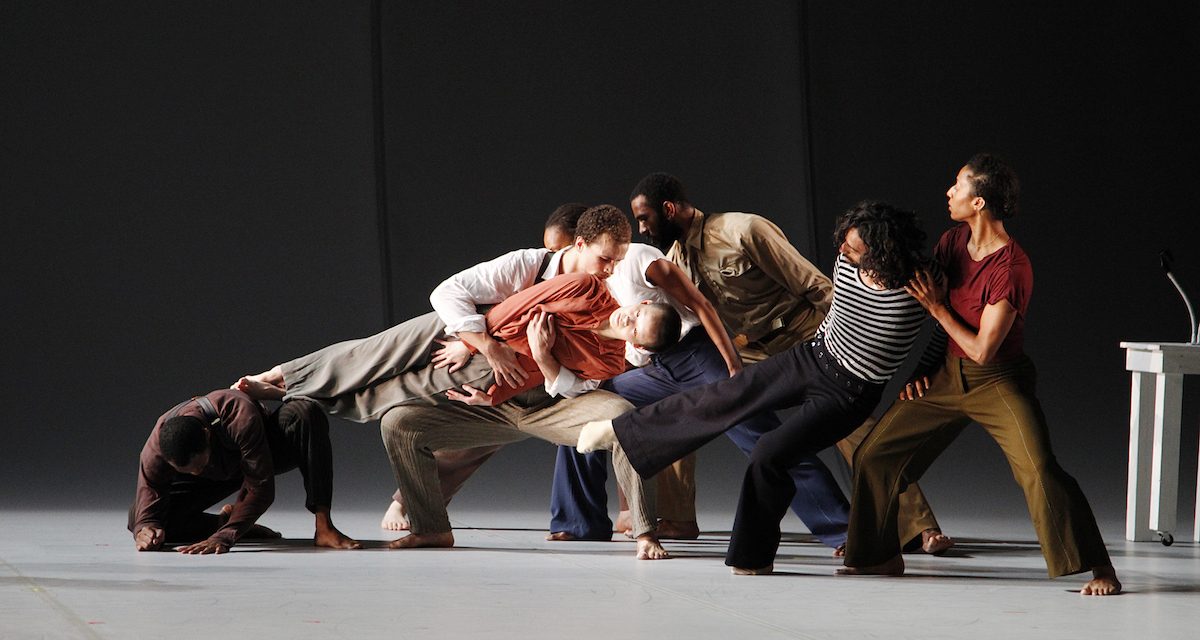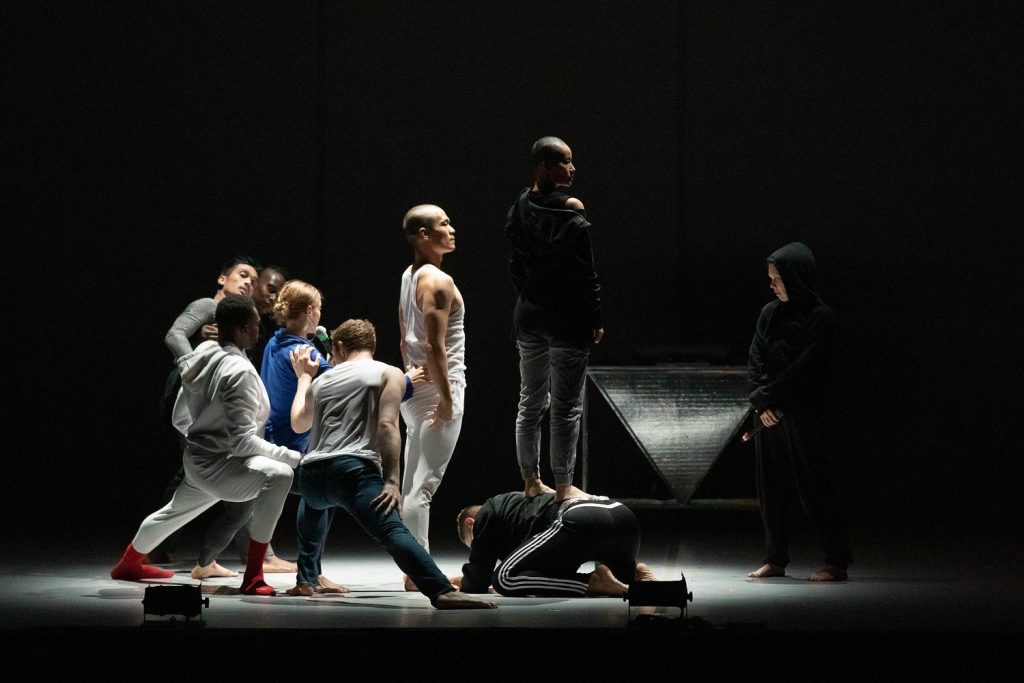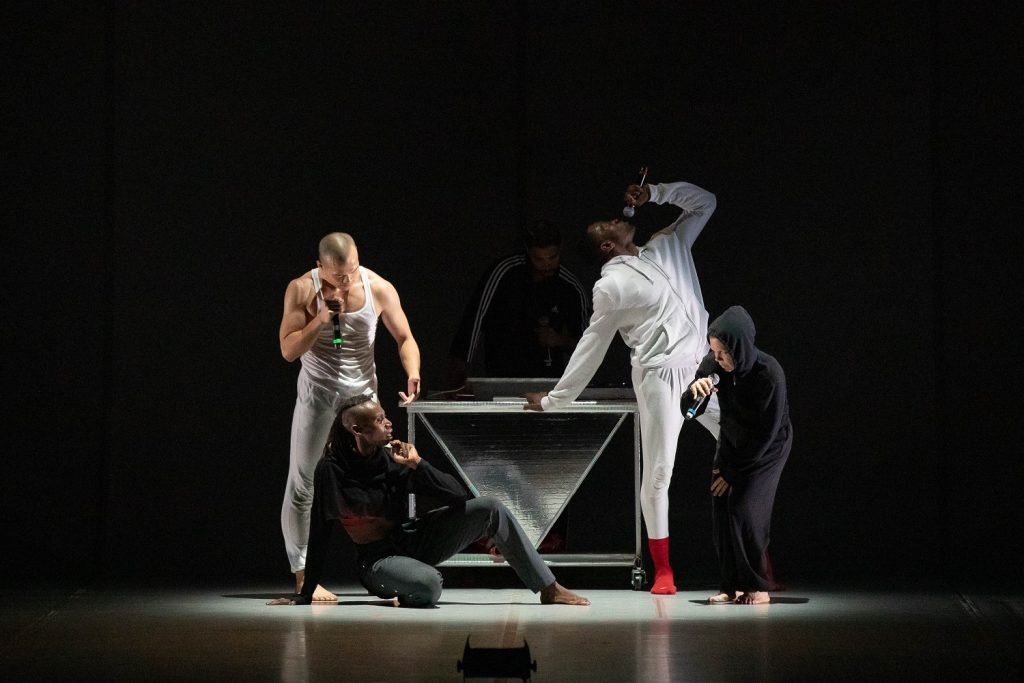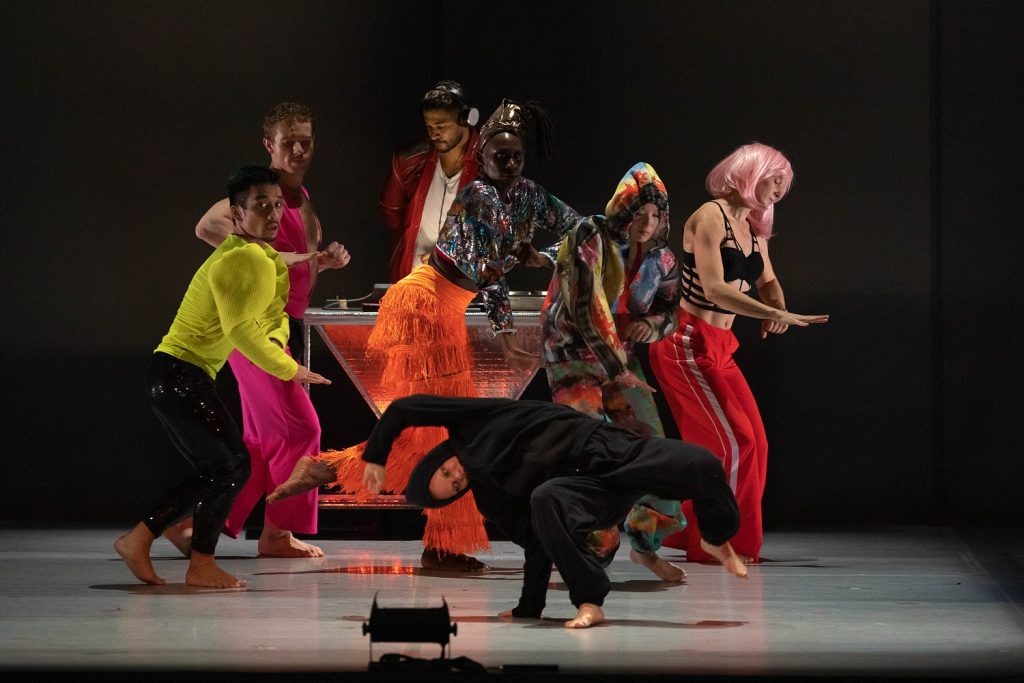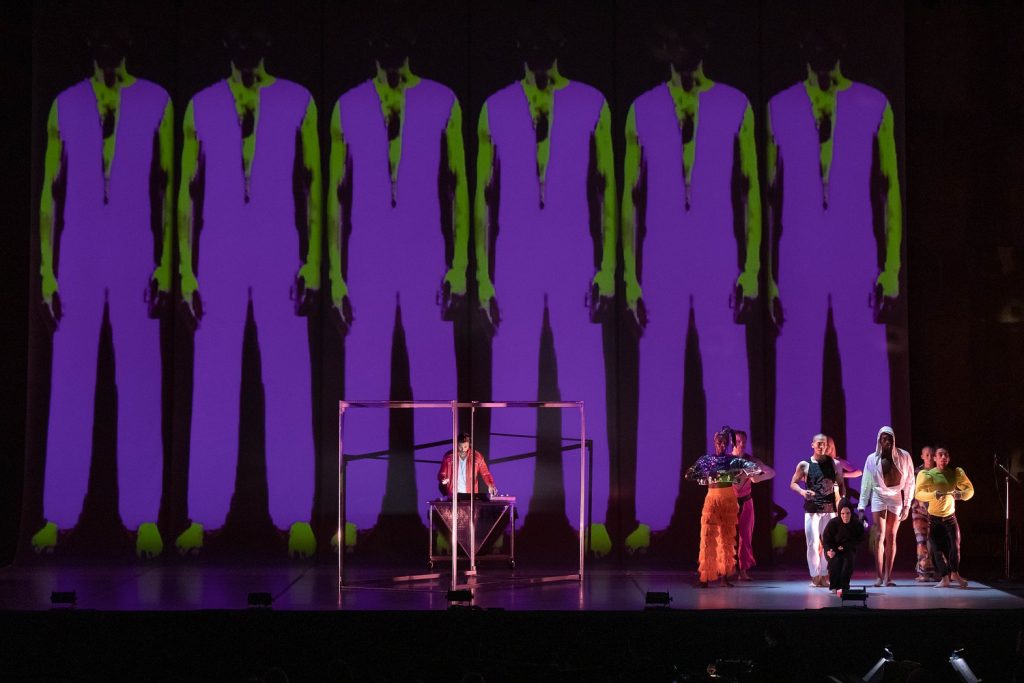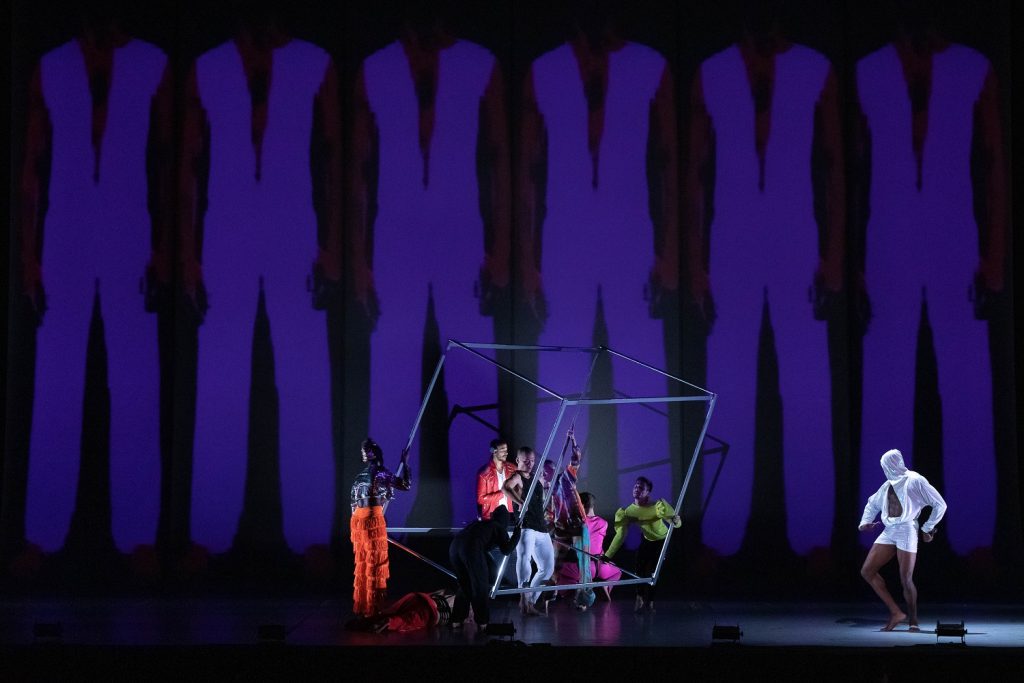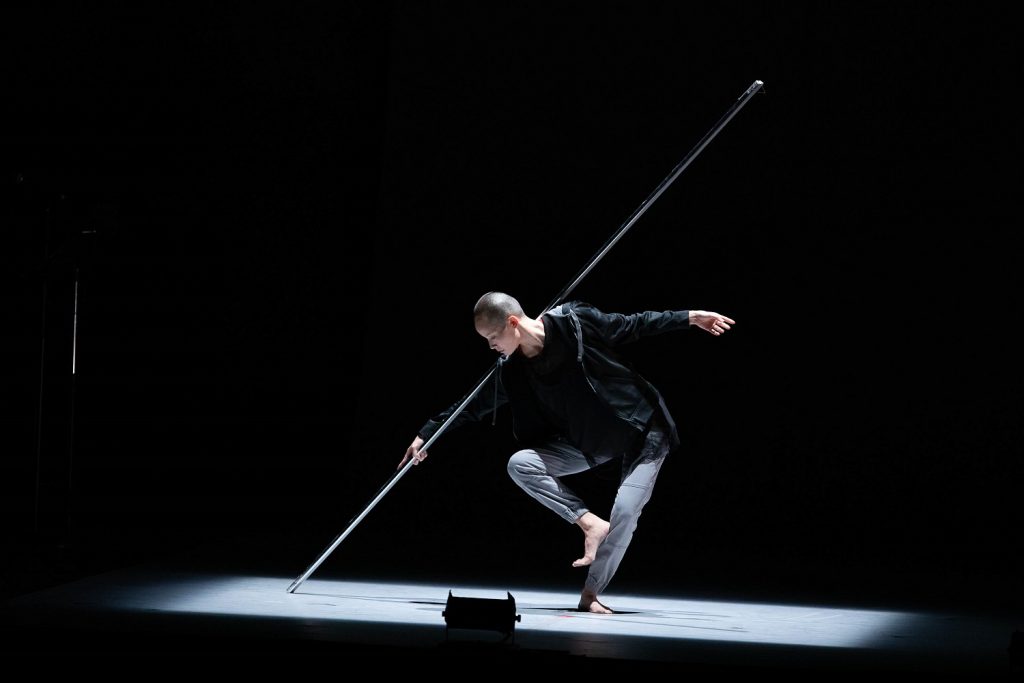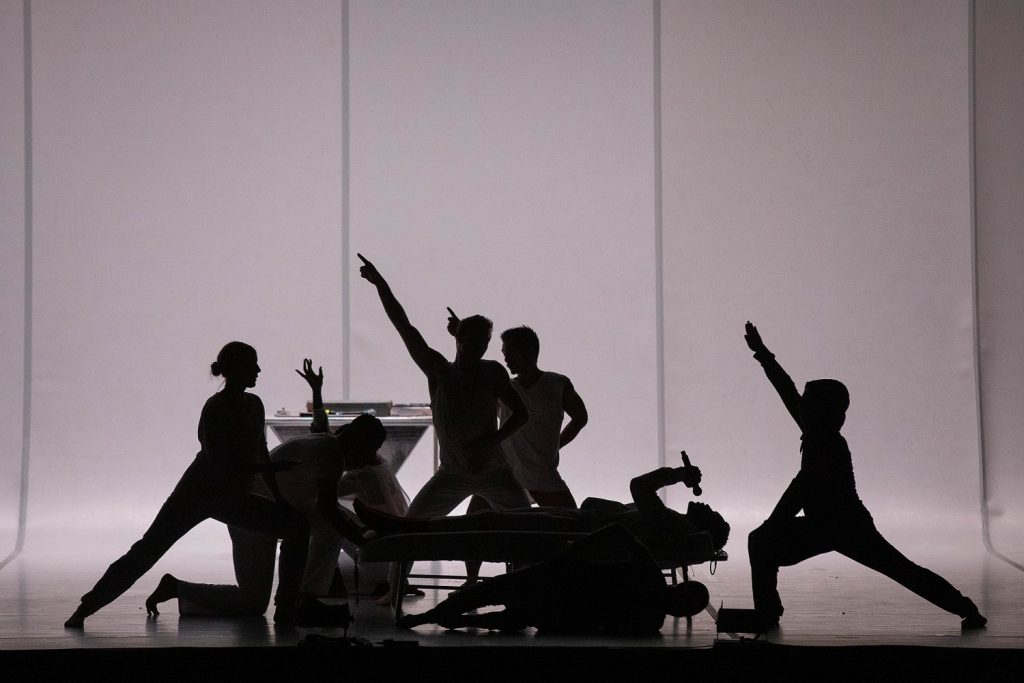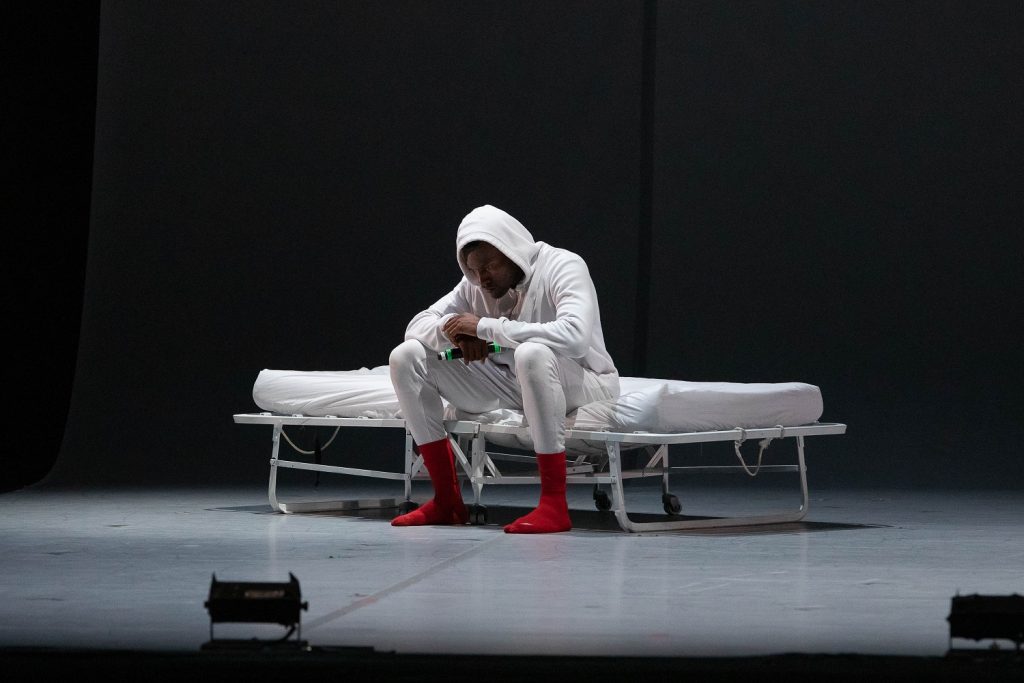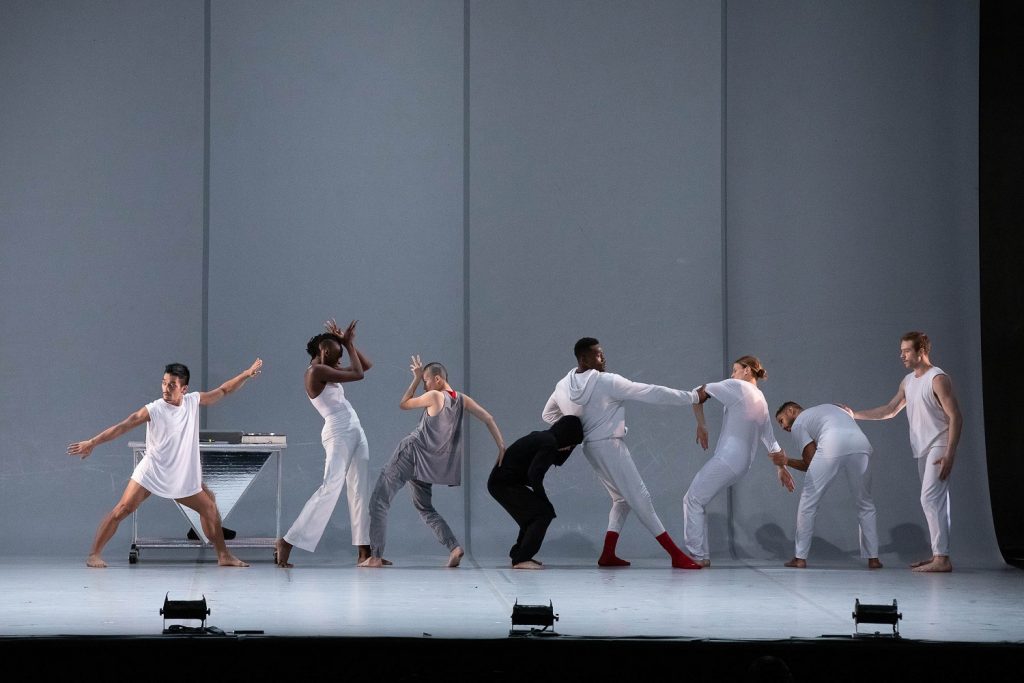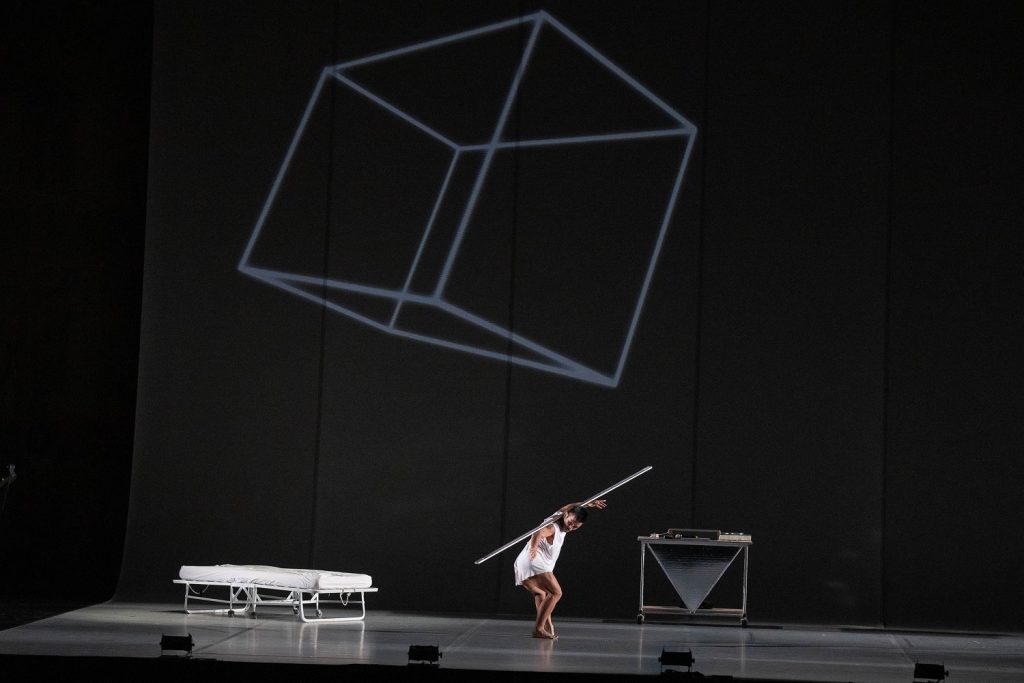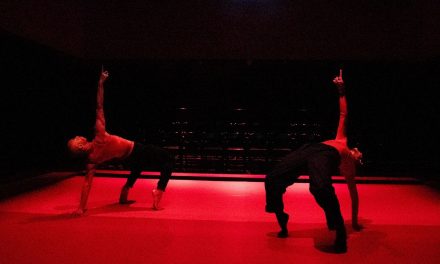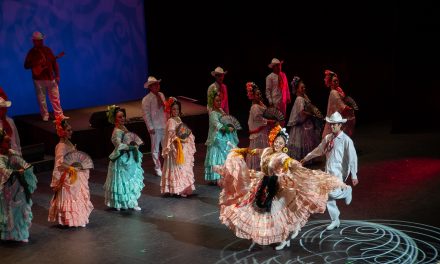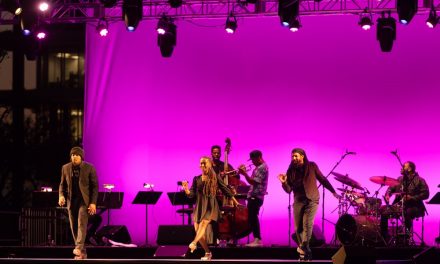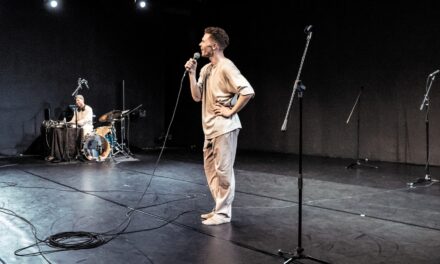Bill T Jones/Arnie Zane Company on Saturday Nov 3., and Sunday, Nov., 4, 2018 at the Center for the Art of Performance UCLA’s Royce Hall, treated the audience to a Trilogy that explored the lives of three very real characters, two living and one fictional; and all on their individual journey for survival. When first hearing about it, it appeared to be a seven-hour test of endurance for not only the performers, but for the audience. However, it became a meditation, that we as an audience came to feel grateful. A truly fearless and courageous offering by Bill T. Jones, Janet Wong and Company, along with Kristy Edmunds the Executive and Artistic Director of UCLA’s Center for the Art of Performance, who shepherded these powerful and complex offerings.
As is the signature of Bill T. Jones’s visionary work; rather than entirely Dance, Jones and his Associate Artistic Director, Janet Wong more aptly followed the Operatic or Musical form which insisted the dancers sing and speak as well as move. This triune grew out of Jones’ conversations with his nephew Lance T. Briggs when developing A Letter to My Nephew/Pretty, the second piece in the trilogy. These pieces seamlessly integrated all art forms into the poignant and challenging allegories. The simple and utilitarian décor was designed by Bjorn Amelan, Lighting Design by Robert Wierzel, Costume Design by Liz Prince, with Projection Design by Janet Wong, and the complex Sound Design by Samuel Crawford. The music, performed by Nick Hallett, the brilliant musical director/performer, Emily Manzo, pianist, and Matthew Gamble, baritone, enlivened and inspired musical nuances and beauty of the onstage performance.
The Analogy/Dora: Tramontane: The first in the three part trilogy was based on Jones’ interviews with 95 year old Dora Amelan, mother of Jones’ husband (Bjorn Amelan). She was a French Jewish nurse and social worker during the Nazi occupation in WWII. It chronicles her early life in Belgium, the death of her mother at the hands of the Germans as they marched into Belgium, and her experiences in the Underground in Vichy France. It explores her harrowing attempts and fortuitous successes at saving lives, and her regrets at having failed so many.
The Stirring voice of Jenna Riegal, who embodied Dora, was a moving representation as the cast moved the constructed core board walls of gray and red, metaphorically symbolizing destruction of the war, movement of trains, and the walled-in entrapment of spirit all framing Dora’s courageous fight for survival. This was done with the haunting melding of excerpts of Schubert’s Nachtstück, Alinde, and Nähe des Geliebten; Charles Trenet’s Le Soleil et la Lune; Parlez-moi d’amour by Lenoir and Le Chant des Partisans by Anna Marly which flowed into every fiber of the story. When the end came, her guilt was marked with never being or doing enough. The bravery in the conclusion to transcend and survive, in spite of the human tragedy, moved the audience to silence.
Analogy/ Lance: Pretty aka the Escape Artist
This piece was inspired by Jones’ beloved nephew, Lance T. Biggs. A former “model, dancer, sex worker and crack addict” now 46, bedridden, in a hospital bed, and being cared for by his mother. Jones recalls young Biggs at San Francisco Ballet as being a precocious young boy, growing into an over confident handsome teen, bigger than life, super sexy, he owned the place. In Paris he became the “Club Queen,” a Josephine Baker, “They thought I was Grace Jones.” Performer Barrington Hinds, who plays the Tall “pretty” Lance, dressed in white sweats and hoody, feigning high heels and walking the runways, numerously marked on stage, as if the choices for direction were many, is flamboyant, exciting and vocally talented. Hinds speaks, dances and throughout begins his journey as Lance, surrounded at first by admirers, then sexual encounters, at first high class then flea bitten hotels and drug dealers, while the voice of Lance and his mother act as a reflection of past, present and future in short postcard-like vignettes of life from New York, Paris to Singapore, Macau.
Jones would encourage Lance, though bedridden, to “write a song, a play – write it down.” He, lance, would do so, and when sent, was then orchestrated by Nick Hallett. Untypical of music Jones uses, it was a rainbow of living sounds from the clubs, Vogue, disco, from the resistance and the underground. And, again, Schubert has become the musical thread, stylized in this chilling, lucid, hologram of a life fully lived and survived.
Analogy/Ambros: The Emigrant
The last offering, was based on W.G. Sebald’s The Emigrants, written in 1992 prior to his untimely death on December 14, 2001. This last “Analogy” was inspired by Jones’ re-reading of Sebald’s celebrated novel, drawing his inspiration from the section on Ambros Adelwarth. Jones’, Wong and Company gift the audience with this allegory physicalized, taking us on a journey of connection and disunion of Adelwarth’s partly historical and partly fictionalized life.
This story tells of Adelwarth, a German valet/manservant who becomes a companion of a privileged and debauched young heir of a wealthy Jewish family. It tracks Ambros travels with Cosmo, his charge, as they move through Europe and the Middle East at the beginning of WWI, and then after Cosmo’s fall into madness and, finally, death.
As Mark O’Connell writes in his New Yorker review “ [Sebald’s] work is ghostly in any number of senses…[his] books often read as though they are being narrated from beyond the grave.” This so epitomizes the feeling evoked by the Jones, Wong and Company’s intelligent and intricate staging, narration, singing and physical contact movements. All challenge the audience’s continued attention and mental acuity so as not to miss a plot point, which in this hologram performance piece, may lead to a revelation about Adelwarth’s journey and survival. Wong’s projections of faces personalized even further our connection with the characters. Again, Hallett’s interpretation of Schubert’s Lieder’s poignant strains, which threads through all three Trilogies adds one more layer of humanity to this brew of brilliance.
In conclusion, it was a privilege to have been a party to this truly remarkable meditation. The idea of seven hours appeared daunting at first, however the journey is so worth it. Not one moment is wasted in this beautiful piece. It is not to be missed.
W.C. Sebald, The Emigrants: “Memory, often strikes me as a kind of dumbness. It makes one’s head heavy and giddy, as if one were not looking back down the receding perspectives of time but rather down on the earth from a great height, from one of those towers whose tops are lost to view in the clouds.”
For more information on the Bill T. Jones/Arnie Zane Company, click here.
For more information about CAP UCLA, click here.
Featured image: Bill T. Jones/Arnie Zane Company – Photo: Paul B. Goode

